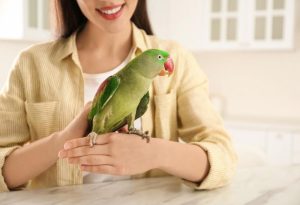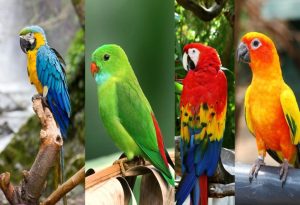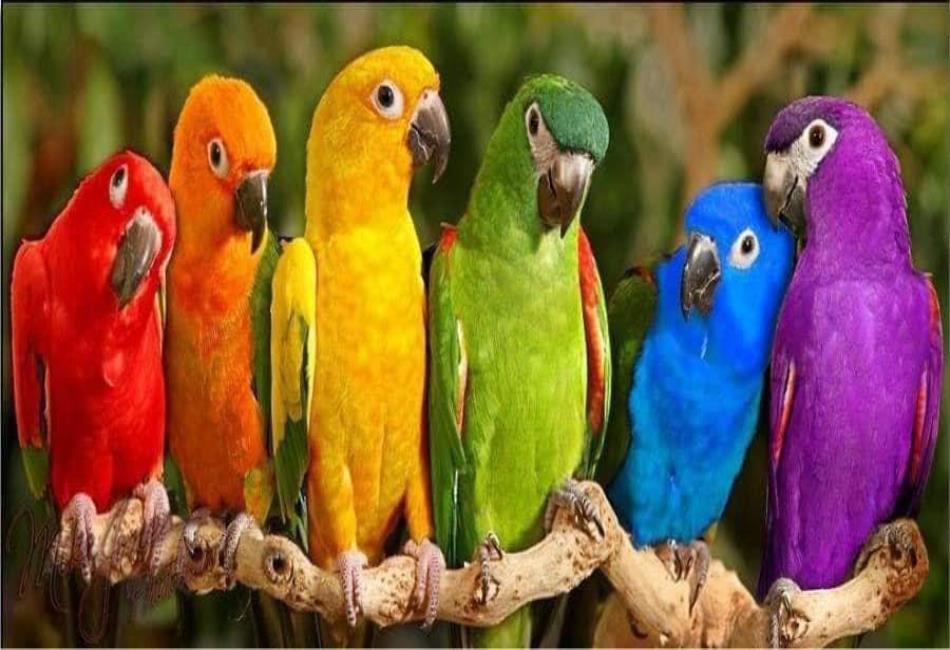How Long Do Parrots Live? A Guide to Parrot Lifespan and Care
Parrots are fascinating, intelligent, and vibrant birds that have captured the hearts of bird enthusiasts worldwide. One of the most intriguing aspects of parrots is their longevity. Known for their potential to live for decades, parrots often outlive many other pets, making them a lifelong commitment. But how long do parrots really live? The answer varies depending on the species, environment, and care they receive.
This article delves into the factors influencing a parrot’s lifespan, the average lifespans of different species, and tips for ensuring they live long, healthy lives.

Factors Affecting Parrot Lifespan
Several factors contribute to how long a parrot can live:
1. Species
The most significant determinant of a parrot’s lifespan is its species. Larger parrots like macaws and African greys tend to live longer than smaller species like budgerigars (budgies) or lovebirds.
2. Diet
A balanced and nutritious diet is crucial for a parrot’s health. Parrots that consume a diet rich in fruits, vegetables, seeds, and specially formulated pellets are less likely to suffer from nutritional deficiencies and related illnesses.
3. Environment
The environment in which a parrot lives plays a significant role in its longevity. A stress-free, stimulating environment with adequate space for flying and exploration can contribute to a parrot’s well-being.
4. Veterinary Care
Regular check-ups and prompt medical attention are essential to prevent and treat illnesses. Many diseases in parrots are preventable with proper care and vaccinations.
5. Mental Stimulation
Parrots are highly intelligent creatures that require mental stimulation. Boredom or neglect can lead to stress-related behaviors and health issues. Providing toys, social interaction, and enrichment activities can help keep parrots happy and healthy.
Lifespan of Common Parrot Species
Here is an overview of the average lifespan of popular parrot species:
1. Budgerigars (Budgies)
- Average Lifespan: 5–10 years in captivity.
- Budgies are small, colorful, and popular pet parrots. Proper care, a healthy diet, and a stimulating environment can extend their lifespan beyond the typical range.
2. Cockatiels
- Average Lifespan: 15–25 years.
- Known for their gentle nature and playful personalities, cockatiels thrive with a balanced diet and regular interaction.
3. Lovebirds
- Average Lifespan: 10–20 years.
- These small parrots are known for their affectionate nature. With proper care, some lovebirds have been known to live closer to 20 years.
4. African Grey Parrots
- Average Lifespan: 40–60 years.
- African greys are renowned for their intelligence and ability to mimic human speech. They require significant attention and mental stimulation to live long, healthy lives.
5. Amazon Parrots
- Average Lifespan: 40–70 years.
- Amazon parrots are sociable and playful birds. With the right care and environment, they can live for several decades.
6. Macaws
- Average Lifespan: 50–80 years.
- These large, colorful parrots are among the longest-living parrot species. Macaws need plenty of space, a varied diet, and mental stimulation to thrive.
7. Conures
- Average Lifespan: 20–30 years.
- Conures are energetic and social parrots. They are a good choice for those looking for a long-term avian companion.
8. Parrotlets
- Average Lifespan: 15–20 years.
- Small but mighty, parrotlets are highly active and require plenty of interaction to live a long and fulfilling life.
9. Cockatoos
- Average Lifespan: 40–70 years.
- Cockatoos are affectionate and require a lot of attention. Their long lifespan makes them a commitment for potential owners.
How to Extend Your Parrot’s Lifespan
To ensure your parrot lives a long, healthy life, follow these best practices:
1. Provide a Balanced Diet
Offer a mix of high-quality pellets, fresh fruits, vegetables, and seeds. Avoid giving foods high in fat, sugar, or salt, as well as toxic foods like chocolate, avocado, and caffeine.
2. Create a Stimulating Environment
Parrots thrive in environments that mimic their natural habitats. Include toys, perches, and opportunities for foraging to keep them engaged.
3. Regular Veterinary Care
Schedule annual check-ups with an avian veterinarian. Monitor for signs of illness, such as changes in appetite, behavior, or droppings, and seek immediate care if needed.
4. Provide Social Interaction
Parrots are social creatures and need interaction with their owners or other birds. Spend time playing and bonding with your parrot daily.
5. Maintain Proper Housing
Ensure your parrot’s cage is spacious, clean, and safe. The cage should allow for movement and include enrichment items like swings, ladders, and climbing ropes.
6. Avoid Stressors
Reduce exposure to loud noises, sudden changes in the environment, and other stressors. A calm and predictable routine can help your parrot feel secure.
7. Allow Exercise
Parrots need regular exercise to maintain their physical health. Allow them out of their cage to fly or play in a safe, supervised space.
8. Monitor Their Mental Health
Prevent boredom and stress-related behaviors by providing puzzles, training sessions, and a variety of toys.
Commitment to Long-Term Care
Parrots are not just pets; they are companions that often share decades with their owners. This long lifespan requires potential owners to think carefully about their ability to commit to their care. It’s also important to make arrangements for the bird’s future in case the owner cannot continue providing care.

Conclusion
The lifespan of a parrot depends on its species, care, and environment. While smaller species like budgies and lovebirds have shorter lifespans, larger parrots such as macaws and African greys can live for several decades, making them lifelong companions. Providing proper nutrition, a stimulating environment, regular veterinary care, and plenty of social interaction are key to ensuring your parrot lives a long, healthy life.
Owning a parrot is a rewarding experience, but it also comes with significant responsibilities. By understanding their needs and committing to their care, you can enjoy many years of companionship with these extraordinary birds.







